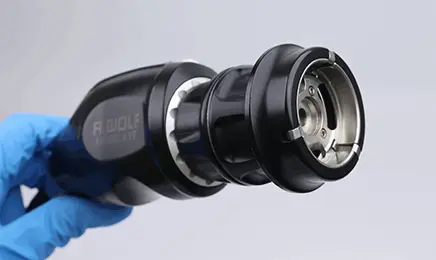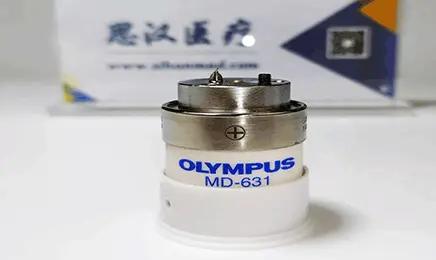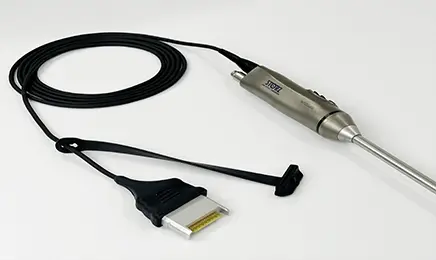Tel: +86-19906868508
E-mail: info@sihanmed.com
Tel: +86-19906868508
E-mail: info@sihanmed.com
Modern hospitals face mounting financial pressures, making cost-effective alternatives like certified pre-owned equipment increasingly attractive. While some resist used devices, today's refurbished laparoscopic tools—cleaned, repaired and recertified—match new-equipment
standards at 30-70% lower costs. There's growing recognition that these savings enable hospitals to allocate resources more strategically—
expanding services, training staff or maintaining other critical equipment. Had medical centers not adopted this approach, many would face
unnecessary budget constraints. Through stringent reprocessing protocols, reputable vendors restore devices to like-new condition while eliminating infection risks. Without compromising performance, hospitals achieve identical surgical outcomes. For forward-thinking administrators, this represents both fiscal responsibility and smart resource management. By embracing verified pre-owned equipment, facilities gain access to premium technology that might otherwise be unaffordable.
Examining procurement budgets, hospitals realize 40-60% savings with quality refurbished laparoscopic systems versus new purchases. While maintaining surgical standards, these savings allow for OR expansions, staff training programs, or additional equipment acquisitions. There exists a false perception that lower costs mean compromised quality—a notion disproven by certified refurbishers documenting every repair and sterilization. Were hospitals to allocate these savings strategically, they could enhance multiple service lines simultaneously. Through multi-year cost comparisons, the total ownership expense proves significantly lower while maintaining equivalent utility. Without proper reprocessing standards these savings wouldn't be possible, but accredited vendors guarantee safety. For cash-strapped rural hospitals especially, this approach makes advanced minimally invasive surgery financially viable. Rather than draining capital budgets, smart facilities redirect savings into patient care improvements. By selecting OEM-recertified equipment, buyers obtain near-new devices at budget-friendly prices.
Purchasing from certified reprocessors, hospitals receive devices that have undergone disassembly, inspection and remanufacturing to exacting standards. While concerns about sterility persist, proper EO gas or plasma sterilization eliminates all microbial risks when performed correctly. There are stringent protocols in place—leak testing optical pathways, verifying insulation integrity, and recalibrating articulation—that ensure operational safety. Had any step in this process been omitted, the equipment wouldn't meet regulatory requirements. Through third-party validation testing, reputable providers demonstrate their instruments meet or exceed OEM specifications. Without such rigorous quality control, the medical community wouldn't embrace refurbished technology. For risk-averse surgical teams, choosing ISO 13485-certified reprocessors provides absolute assurance. By reviewing sterilization certificates and performance reports, buyers verify each instrument's readiness for clinical use. Rather than assuming risks, hospitals should demand full documentation trails from suppliers.
Evaluating potential equipment purchases, prioritize vendors offering comprehensive service histories and OEM-grade replacement parts. While bargain prices may tempt buyers, only devices reprocessed by certified technicians guarantee longevity. There should be clear evidence of repairs undertaken, components replaced, and functionality tests passed before considering any purchase. Were a supplier unable to provide this documentation, they should immediately be disqualified. Through careful needs assessment, hospitals can match specific instrument models to their surgical volumes and specialty requirements. Without understanding your OR's workflow, even premium equipment may prove poorly suited. For optimal procurement outcomes, involve surgeons and biomedical engineers in the selection process. By verifying warranty terms and after-sales support, buyers protect against unexpected repair costs. Rather than making rushed decisions, conduct side-by-side comparisons of multiple supplier offerings. Inspecting demonstration units personally whenever possible ensures the equipment meets your team's expectations.
Understanding reprocessing protocols reveals why certified used equipment performs reliably. Disassembling, ultrasonically cleaning, and inspecting each component forms just the beginning of proper refurbishment. There are multiple validation stages—including pressure testing for insufflators, pixel mapping for cameras, and articulation verification for graspers—that ensure complete functionality. Had any device failed these tests, it would be scrapped rather than resold. Through microbial challenge testing, reprocessors prove their sterilization methods eliminate all pathogens. Without such exhaustive quality checks, the medical community couldn't trust these devices. For complete transparency, leading vendors document every step with time-stamped records and high-resolution photos. By adhering to AAMI/ANSI and FDA standards, they demonstrate equivalent-to-new condition. Rather than cutting corners, premium reprocessors often exceed original manufacturing tolerances during recalibration. Reviewing these certification documents carefully provides buyers with absolute confidence in their purchases.
Analyzing technological advancements, hospitals discover many "previous-generation" laparoscopic systems offer nearly identical core functionality to newest models at substantial discounts. While lacking some newer features, these reliable workhorses—performing, enduring and delivering consistent results—remain excellent clinical tools. There exists smart middle ground between antiquated equipment and bleeding-edge technology that's often financially unjustifiable. Were hospitals to objectively compare systems, they'd frequently find minor feature differences don't justify 300% price premiums. Through strategic equipment selection, facilities can outfit multiple ORs for the cost of one new system. Without compromising patient outcomes, this approach maximizes capital efficiency. For procedure-specific needs, certain older models may actually outperform newer "general purpose" alternatives. By consulting independent technical evaluations, buyers identify which generational differences truly impact their workflows. Rather than chasing unnecessary upgrades, savvy purchasers match technology to actual clinical requirements. Reviewing real-world performance data often reveals older systems maintaining precision after thousands of procedures when properly maintained.

With years of dedication to the medical equipment industry, Shengjun He has leveraged his solid professional expertise and keen insight into industry trends to establish Sihan Medical as a leading force in the endoscope repair sector. Prior to founding Sihan Medical, he accumulated extensive experience in medical device maintenance—a foundation that proved instrumental for his entrepreneurial journey. His background spans hands-on equipment repair, technical R&D, and management, granting him comprehensive understanding of medical devices, from their underlying technology to market demands.


